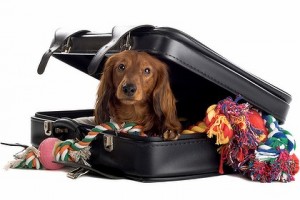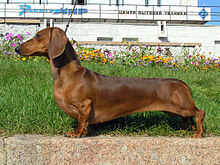01529 304273 - [email protected]
 Moving house is stressful for the whole family, including your pets. Moving from a safe and familiar environment can be disorientating and can lead to behavioural problems or even your pet going missing.
Moving house is stressful for the whole family, including your pets. Moving from a safe and familiar environment can be disorientating and can lead to behavioural problems or even your pet going missing.
As well as coping with all of the upheaval during the move, it’ll take weeks for him to get used to a new territory and strange smells in the new house. Although you’ll be very busy with little time, please bear in mind the following to help make it easier and safer for him.
 A trigger is anything that irritates the airways and causes the symptoms of asthma to appear. Common triggers include colds or flu, cigarette smoke, exercise and allergies to things like pollen, house-dust mites or furry or feathered animals. Everyone’s asthma is different and people with asthma may have several triggers.
A trigger is anything that irritates the airways and causes the symptoms of asthma to appear. Common triggers include colds or flu, cigarette smoke, exercise and allergies to things like pollen, house-dust mites or furry or feathered animals. Everyone’s asthma is different and people with asthma may have several triggers.
Allergens, which trigger asthma symptoms are found in the saliva, flakes of skin (dander), fur and urine of furry and feathered animals. Although research shows that having pets as children protects against illnesses including asthma, and conversely that having pets causes the disease.
Dogs and cats do not have to be enemies; they can be the best of friends. They certainly don’t naturally hate each other. But each has instincts which can cause problems when they meet. Both are predators and love to chase things smaller than themselves, and unfortunately for cats, most dogs are bigger than they are. And being intelligent, most cats, seeing a big, hairy hound hurtling towards them at speed, will decide running is a sensible response.
However if the puppies and kittens are given plenty of chances to meet other friendly adult dogs or cats, there is every chance that they will get along well in the future. If you have a choice in the matter, pick a puppy or kitten that is used to living with the other species, or if you have no animal at the moment, consider getting a kitten first, so it is well established before getting the puppy. The added advantage of this arrangement is that the cat may well be bigger than the puppy, at least for a while, and the cat can teach it who really rules the house early on.
Sometimes though, this is not possible, because you already have existing pets, or perhaps you have adopted a dog and you don’t know how he is going to behave when he meets your cat, or the other way round. If this is the case, you’ll have to be very careful during the first meetings to keep both pets calm, or the cat may become frightened or injured and may never get along. If the dog is a known cat or squirrel chaser the chances of a successful introduction are low, so maybe this combination of pets should be reconsidered, or the owners will have to be prepared to keep the pets apart permanently. The idea is to get both animals bored with the presence of the other, i.e. the dog is not threatening and overly interested in the cat, and the cat is not frightened and likely to run.
Q3 – My Chocolate Labrador is 3 years old and always jumps up when he meets people. It doesn’t seem to matter what I do. Do you have any suggestions as I feel really embarrassed that he does it, especially when we are out on a walk?
Q2 – My dog has just suffered with an abscess on her anal gland and has had to have it drained as well as having had a couple of weeks of antibiotics to get rid of the infection. She is now over it but why do anal glands fill up and get infected and is it something that I am doing with her diet that is causing it?
Q1 – My friend’s dog has just been diagnosed with Kennel Cough and we go out walking regularly together. Can my dog catch it and if so what are the symptoms and what should I do?
Are you one of those people who prefer larger dogs? Do you know someone who has told you that they prefer larger dogs because small dogs are yappy and snappy? Whether you are a large-dog person or a small-dog person, one thing we all would agree on is that a larger percentage of small dogs tend to have a different type of temperament than medium and large dogs. Small dogs have earned the reputation of being yappy, snappy, jealous, protective, wary of strangers and not the greatest child companions and, unfortunately, it has become widely accepted.
So why do small dogs tend to act differently than large dogs? They are all the same type of animal, a mammal of the Canidae family, of the order Carnivora: Canis lupus familiaris, which is a domesticated subspecies of the wolf. Commonly referred to as a canine, this type of animal has instincts that need to be fulfilled in order to be happy and balanced. The problem isn’t with the dogs, the difference between large and small dogs is in the way humans tend to treat them differently.
Many behaviours humans do not allow large dogs to get away with, are considered “cute” in small dogs. For example:
 The dachshund is a short-legged, long-bodied dog belonging to the hound family. The standard size dachshund was bred to scent, chase, and flush out badgers and other burrow-dwelling animals, while the miniature dachshund was developed to hunt smaller prey such as rabbits. In the American West they have also been used to hunt prairie dogs.
The dachshund is a short-legged, long-bodied dog belonging to the hound family. The standard size dachshund was bred to scent, chase, and flush out badgers and other burrow-dwelling animals, while the miniature dachshund was developed to hunt smaller prey such as rabbits. In the American West they have also been used to hunt prairie dogs.
The Dachshund is curious, clever, lively, affectionate, proud, brave and amusing. Devoted to its family, it can be slightly difficult to train and housebreak, but not impossible. Dachshunds travel well. This little dog needs an owner who understands how to be his pack leader or he will take over the house, and begin to try and tell the owner what to do. If the dog is allowed to take over, many behaviour problems will arise, such as, but not limited to, guarding furniture, separation anxiety, guarding food, toys or other objects, snapping, biting and obsessive barking. It will become unpredictable with children and adults they do not know. If it gets really bad, it may become unpredictable with its owner. They are usually recommended for older, considerate children, simply because most owners do not display proper pack leadership to small dogs, causing moderate to severe protectiveness.
 The Akita is a large spitz breed of dog originating from the mountainous northern regions of Japan.
The Akita is a large spitz breed of dog originating from the mountainous northern regions of Japan.
In America the Akita breed consists of both the Akita Inu and the ‘American Akita. In the UK the Akita Inu has a lightly build and comes in a small selection of colours, whereas the Akita comes in a wide range of colours. In America and Cananda they are considered to be the same breed. This article ith deal with the Akita, or the American Akita rather than the Akita Inu.
Both forms of Akita are probably best known worldwide from the true story of Hachikō, a loyal Akita dog who lived in Japan before World War II. The Akita is a strong, independent and dominant breed, commonly aloof with strangers but affectionate with family members. They are known to compete in many dog competition sports, yet some are known to be intolerant of other dogs and require a knowledgeable and firm handler.As a breed, Akitas are generally hardy, but they have been known to suffer from various genetic conditions and be sensitive to certain drugs.
Gelert
The story goes that in the thirteenth-century, Prince Llywelyn the Great had a palace at Beddgelert in Caernarvonshire, and as the Prince was a keen hunter, he spent much of his time in the surrounding countryside. He had many hunting dogs, but one day when he summoned them as usual with his horn, his favourite dog Gelert didn’t appear, so regretfully Llywelyn had to go hunting without him.